
Roots
Our strands, in their spiraled wonder, hold more than just pigment and protein; they carry whispers of ages, echoes of ancestral hands, and the enduring wisdom of communities. There is a quiet recognition that settles upon us when we consider the very foundations of our hair, not merely as a biological marvel, but as a living record. This journey into the elemental aspects of textured hair invites a deeper connection, recognizing that what grows from our scalp is intricately bound to stories, science, and the timeless rhythms of life.

The Anatomy of Spirals
To truly appreciate the richness of textured hair, one must first peer into its microscopic architecture. Unlike straight or wavy hair, spiraled strands possess a unique elliptical cross-section, which contributes to their distinctive curl pattern. This shape means the cuticle scales, the outermost protective layer, do not lie as flat. Instead, they are often slightly raised, creating more points of friction.
The cortex, the inner bulk of the hair, also varies, with a distribution of keratin proteins that influences the strand’s strength and elasticity. This complex structure is what gives spirals their remarkable spring, their ability to coil and defy gravity, and their inherent need for specific care.
The follicle itself, the tiny organ beneath the scalp that produces the hair, plays a significant role. For spiraled hair, the follicle is often curved, dictating the direction in which the hair grows and coils as it emerges. This curvature influences everything from how natural oils travel down the strand to how the hair responds to external stressors. Grasping these foundational elements provides a clearer picture of why traditional practices, developed over generations, so often speak directly to the particular needs of these strands.
Spiraled strands, with their unique elliptical cross-section and curved follicles, possess an inherent structure that demands specific care.

Decoding Hair Classification Systems
The language we use to describe hair textures can sometimes feel like a labyrinth, yet systems exist to help us categorize and, in turn, grasp the nuances of spirals. The most widely recognized system classifies hair into types, often starting with a number (1-4) indicating the overall wave pattern, followed by a letter (A-C) denoting the tightness of the curl. For spiraled hair, we typically look at types 3 and 4.
- Type 3 ❉ Characterized by defined curls that range from loose, bouncy spirals (3A) to tight, springy corkscrews (3C). These curls often have a clear S-shape.
- Type 4 ❉ Distinguished by very tight, often Z-patterned coils that can appear less defined when dry (4A, 4B, 4C). This hair type experiences the most shrinkage and can be the most delicate.
While these classifications offer a helpful starting point, they do not encompass the full spectrum of individual variation. Two individuals with the same numerical and letter designation might still have vastly different porosities, densities, and responses to products. Cultural traditions, however, often move beyond such rigid categories, recognizing the individual vitality of each head of hair and the specific needs that arise from lived experience within a particular climate or environment.
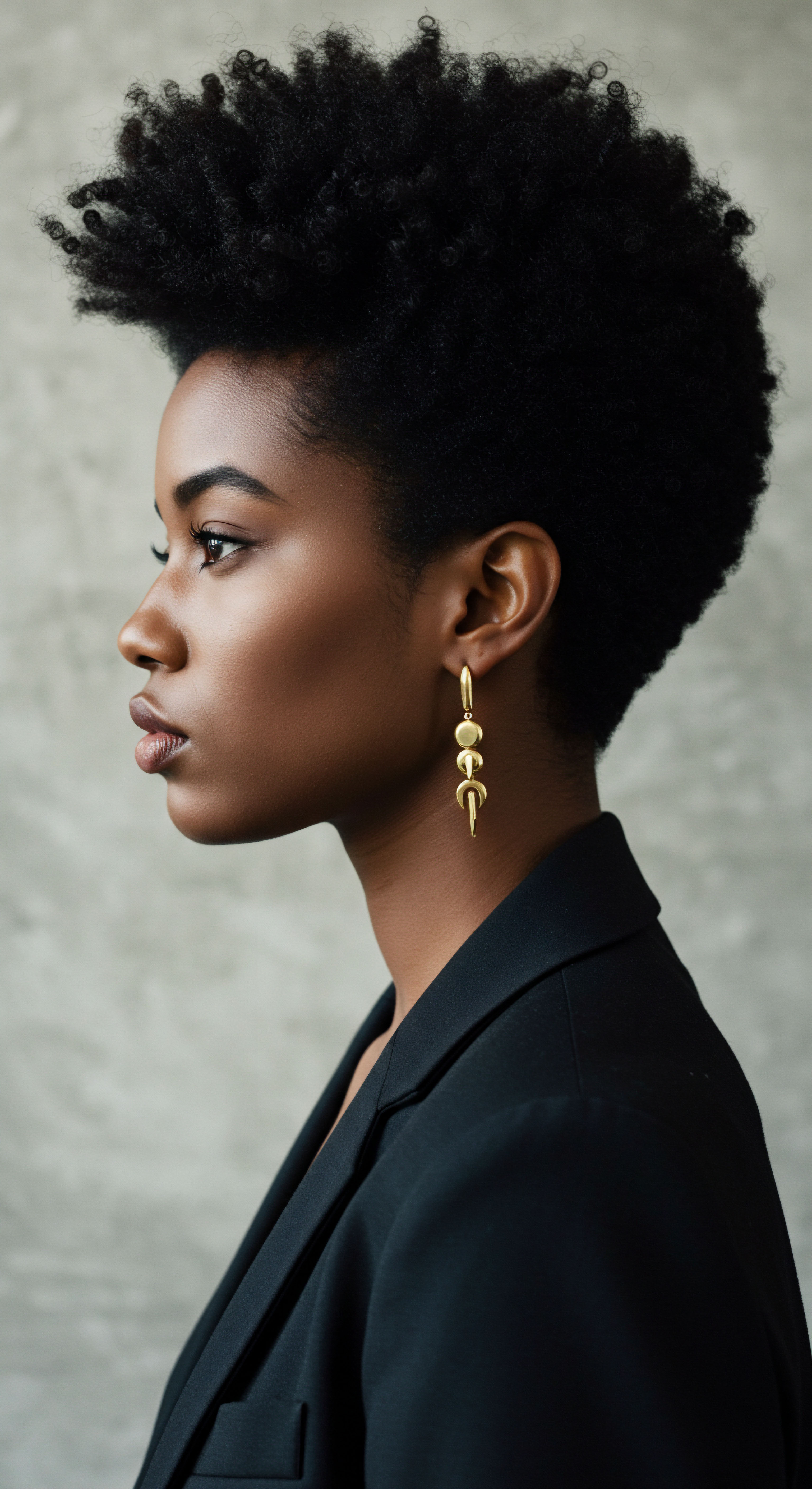
A Lexicon for Spiraled Strands
The vocabulary surrounding textured hair has expanded, offering precise terms that help us communicate about our strands with greater accuracy. Beyond the basic curl types, concepts such as Porosity, Density, and Elasticity are essential. Porosity refers to the hair’s ability to absorb and retain moisture, which is greatly affected by the cuticle’s condition.
High porosity hair, with its more open cuticles, readily takes in water but can also lose it quickly. Low porosity hair, with tightly closed cuticles, resists moisture but holds onto it once absorbed.
Density refers to the number of individual hair strands on the scalp, which influences how full the hair appears. Elasticity, the hair’s ability to stretch and return to its original state without breaking, is a key indicator of its health. When these terms become part of our daily conversation, we move beyond generic advice and begin to tailor care that truly speaks to the unique needs of our spirals. Many traditional practices inherently addressed these aspects long before scientific terms were coined, intuitively balancing moisture, strength, and scalp vitality.
| Term Porosity |
| Description Hair's ability to absorb and hold moisture. |
| Relevance to Care Dictates product absorption and moisture retention strategies. |
| Term Density |
| Description Number of hair strands on the scalp. |
| Relevance to Care Influences product amount and styling techniques. |
| Term Elasticity |
| Description Hair's ability to stretch and return without breaking. |
| Relevance to Care Indicates protein-moisture balance and overall strand health. |
| Term Understanding these terms provides a foundation for personalized care. |

How Do Hair Growth Cycles Vary Across Hair Types?
The journey of each hair strand follows a predictable cycle ❉ anagen (growth), catagen (transition), and telogen (resting/shedding). While the phases are universal, their duration can vary among individuals and, to some extent, among different hair types. For many with spiraled hair, the anagen phase, where the hair actively grows, can be shorter compared to straight hair.
This means that while hair may grow at the same rate per month, the total length achievable before shedding can be less. This shorter growth cycle contributes to the perception that textured hair grows slowly, when in reality, it may simply have a different retention pattern.
Factors such as genetics, nutrition, and overall health significantly influence these cycles. Traditional cultural practices often incorporated dietary considerations and topical applications designed to support scalp health, recognizing its fundamental role in nurturing the hair from its very source. These practices aimed to create an optimal environment for growth, instinctively recognizing that a healthy scalp is the precursor to vibrant strands. The careful application of herbal infusions, nourishing oils, and gentle manipulation found in many ancestral regimens speaks to this profound recognition of the hair’s life cycle.

Ritual
From the foundational recognition of our spirals, we now turn to the rhythm of their care, the daily and weekly practices that shape their vitality. The practices passed down through generations, often simple yet profoundly effective, offer a compelling counterpoint to the often overwhelming array of modern products and techniques. These ancestral rituals, born from intimate knowledge of natural elements and the specific needs of textured hair, provide a timeless blueprint for maintenance and celebration. It is in these thoughtful applications and patient methods that we discover a deeper connection to our strands, transforming routine into a meaningful act of self-care and heritage.

Protective Styling Traditions
Protective styles, a cornerstone of textured hair care across numerous cultures, are more than just aesthetic choices; they are a strategic defense for the hair shaft. From intricate cornrows that grace the scalp in geometric patterns to elegant braids that fall like cascades, these styles minimize manipulation, reduce exposure to environmental stressors, and allow hair to retain length. The practice of styling hair to protect it is seen across continents, from the meticulous braiding of West African communities, often adorned with cowrie shells or beads, to the carefully wrapped head coverings of various indigenous groups.
These styles allow the hair to rest, minimizing breakage that can occur from daily combing or styling. They also serve as a canvas for cultural expression, conveying status, age, marital status, or even tribal affiliation. The careful sectioning, tension, and finishing techniques employed in traditional protective styles are lessons in gentle handling, teaching us how to secure our strands without causing undue strain on the scalp or individual hair follicles. Modern adaptations of these styles, such as box braids or twists, draw directly from this rich heritage, offering both beauty and protection.
Protective styles, a strategic defense for the hair shaft, are a cornerstone of textured hair care across numerous cultures.

Defining Spirals with Natural Methods
Achieving definition in spiraled hair often seems like a pursuit of elusive perfection in the modern world, yet traditional methods frequently achieved stunning clarity without a single chemical. The secret often resided in the skillful use of natural emollients and humectants, combined with precise application techniques. For centuries, various cultures have used ingredients like aloe vera, flaxseed, or okra gel to coat and clump curls, providing hold and shine. These substances, derived directly from the earth, offered a gentle yet effective way to sculpt and set spirals.
The application methods were equally significant. Techniques like finger coiling, where individual strands are wrapped around a finger to encourage curl formation, or shingling, a process of applying product section by section to smooth and define, mirror practices that have been intuitively recognized for generations. These methods rely on patience and observation, recognizing the unique curl pattern of each section of hair and working with its natural inclination rather than against it. The outcome is often a soft, touchable definition that honors the hair’s innate texture.
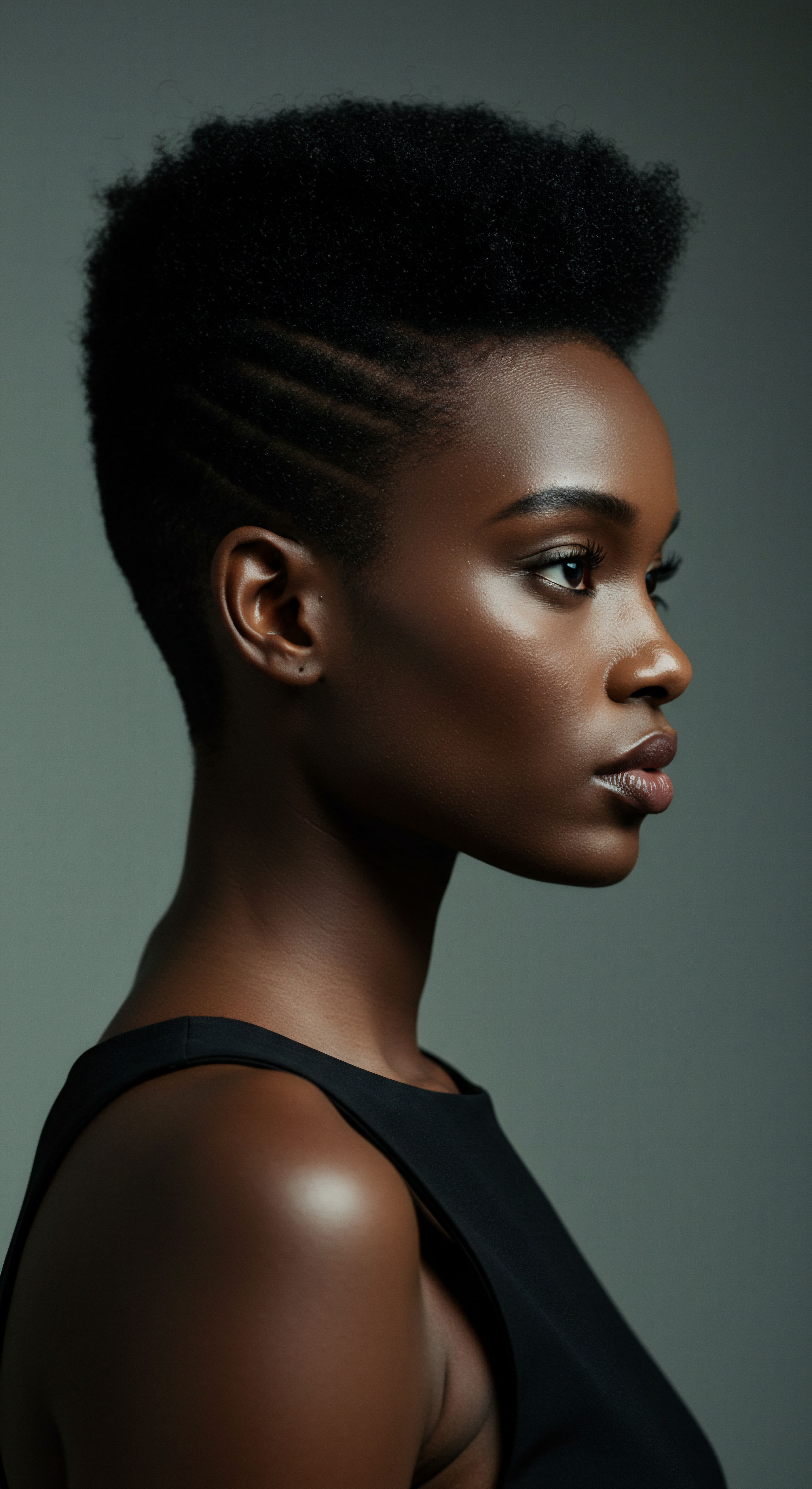
Can Traditional Tools Improve Modern Care?
The tools employed in ancestral hair care, often crafted from natural materials, possessed an inherent gentleness that modern implements sometimes lack. Consider the wide-toothed combs carved from wood or bone, designed to detangle without snagging or tearing delicate strands. These tools were often polished smooth, their surfaces gliding through hair with minimal friction. The absence of harsh plastics or sharp seams meant less stress on the cuticle, reducing breakage.
Another example is the use of hands as primary styling tools. Many traditional African and indigenous hair practices emphasize finger detangling and styling, which allows for a tactile recognition of the hair’s needs and limits. This direct contact promotes a gentle tendency, preventing the aggressive pulling that can lead to damage. While modern innovation offers a vast array of brushes and combs, a return to the principles of gentle, intentional detangling with tools that respect the hair’s delicate nature can significantly improve overall hair health.
Here are some traditional tools and their modern counterparts:
- Wooden or Bone Combs ❉ Provide gentle detangling and distribute natural oils.
- Fingers ❉ Offer precise detangling and product application, minimizing breakage.
- Natural Fibers ❉ Used for headwraps and hair coverings, protecting hair from elements.
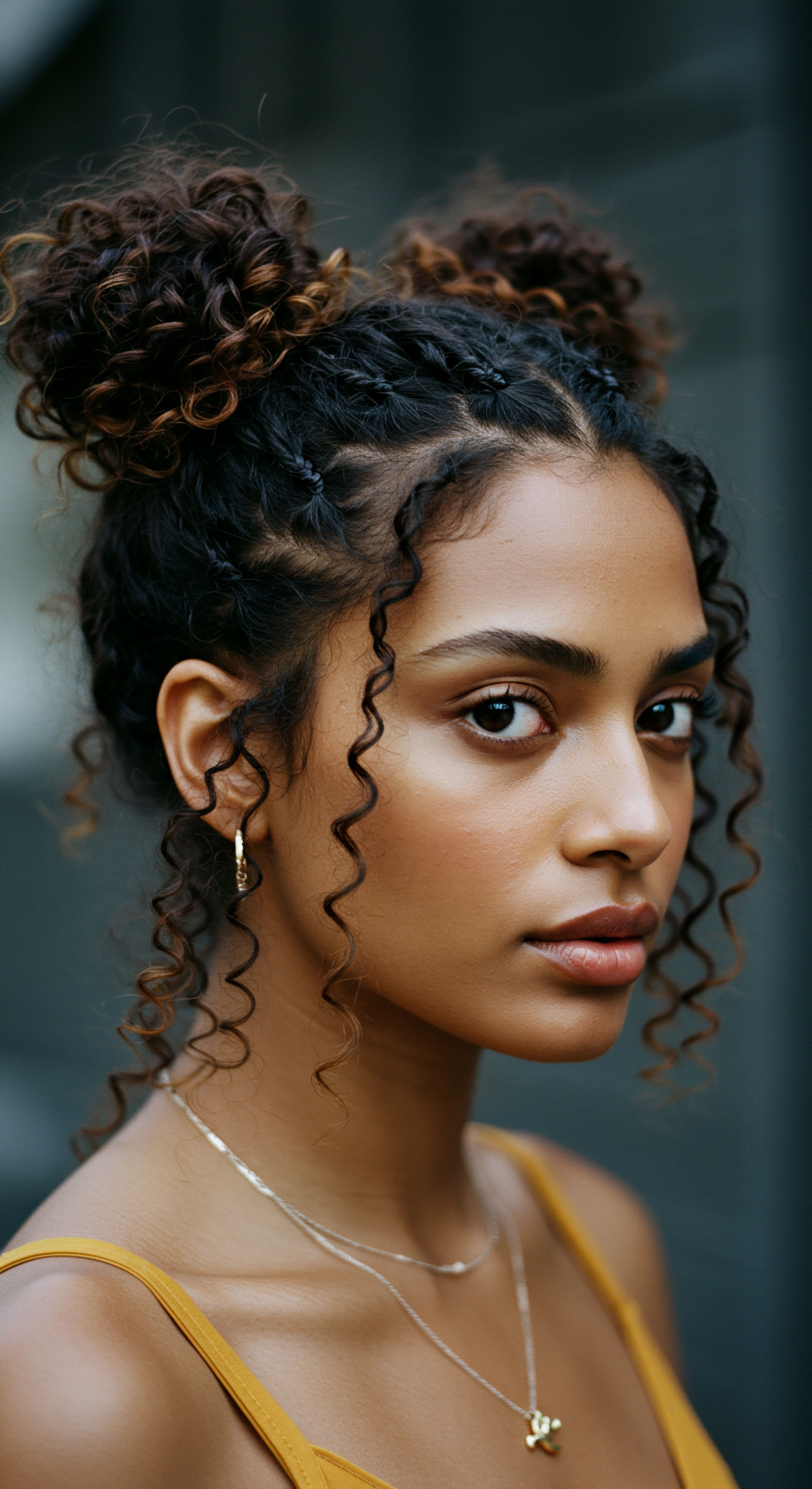
Heat Styling and Ancestral Methods
The concept of altering hair texture with heat is not entirely new, though the intensity and frequency of modern heat styling are distinct. Historically, some cultures utilized warm cloths or mild, indirect heat from fires to stretch or temporarily straighten hair for specific ceremonies or styling purposes. However, these applications were typically infrequent, gentle, and often followed by nourishing treatments. The emphasis was on temporary transformation for a specific occasion, not on daily alteration.
The ancestral method prioritizes the preservation of the hair’s natural integrity. The recognition was that excessive heat could compromise the hair’s strength and vitality. This contrasts sharply with contemporary practices that often involve high-temperature tools used frequently, leading to dehydration, protein damage, and loss of curl pattern over time.
A lesson from these traditions involves recognizing heat as a powerful tool to be used sparingly and with utmost care, always balanced with deep conditioning and protective measures. The health of the hair, in these contexts, always took precedence over drastic, long-term alteration.

Relay
Moving beyond the foundational elements and the daily rhythms of care, we arrive at a space where cultural traditions and modern recognition truly converge, revealing a profound interconnectedness. This is where the wisdom of our ancestors meets the precision of contemporary science, offering not just techniques, but a holistic philosophy for hair well-being. The true power lies in recognizing how ancient practices, often dismissed as folklore, hold scientific truths that can redefine how we tend to spirals today. It is a dialogue between past and present, a recognition that the most sophisticated solutions often have roots in the deepest histories.
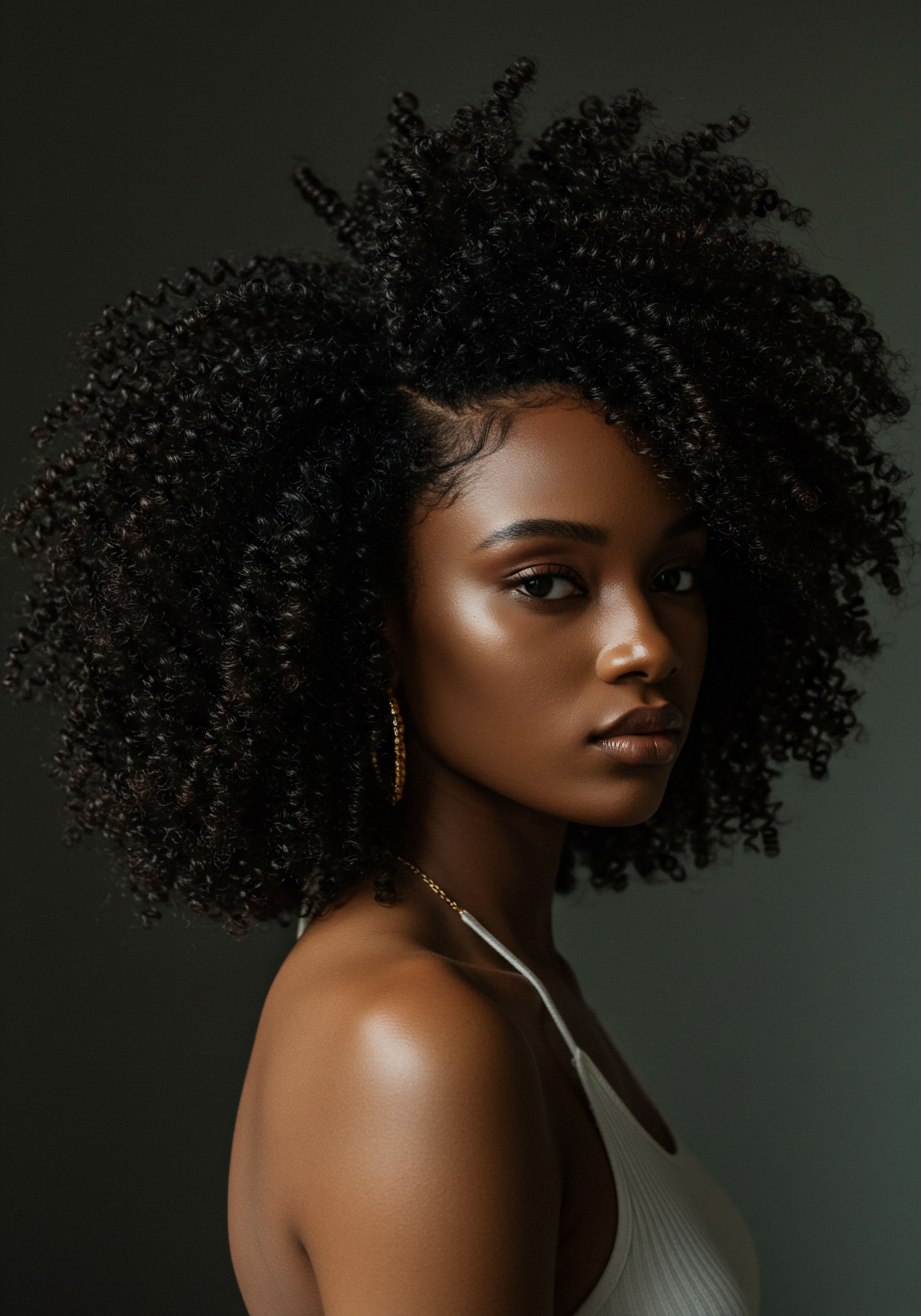
Personalized Regimens Through Cultural Lenses
The modern beauty landscape often champions a uniform approach or relies on generic advice. However, traditional hair care was inherently personalized, shaped by local botanicals, climate, and individual needs. Consider the diverse hair care regimens of various African communities, where specific herbs and oils were chosen based on their perceived effects on scalp health, hair strength, or growth. For instance, in some West African traditions, shea butter was used not only as a sealant but also as a protective barrier against harsh sun and dry winds, adapting care to environmental realities.
This ancestral personalization contrasts with the mass-produced uniformity of many contemporary products. By looking to these traditions, we learn to observe our own hair more closely, recognizing its unique response to different ingredients and practices. This encourages a shift from blindly following trends to curating a regimen that truly speaks to our hair’s specific requirements, much like our forebears did with their localized botanical knowledge. It encourages us to ask ❉ What does my hair need today, in this climate, given its current state?
Ancestral hair care was inherently personalized, shaped by local botanicals and climate, a wisdom that can guide modern regimen creation.
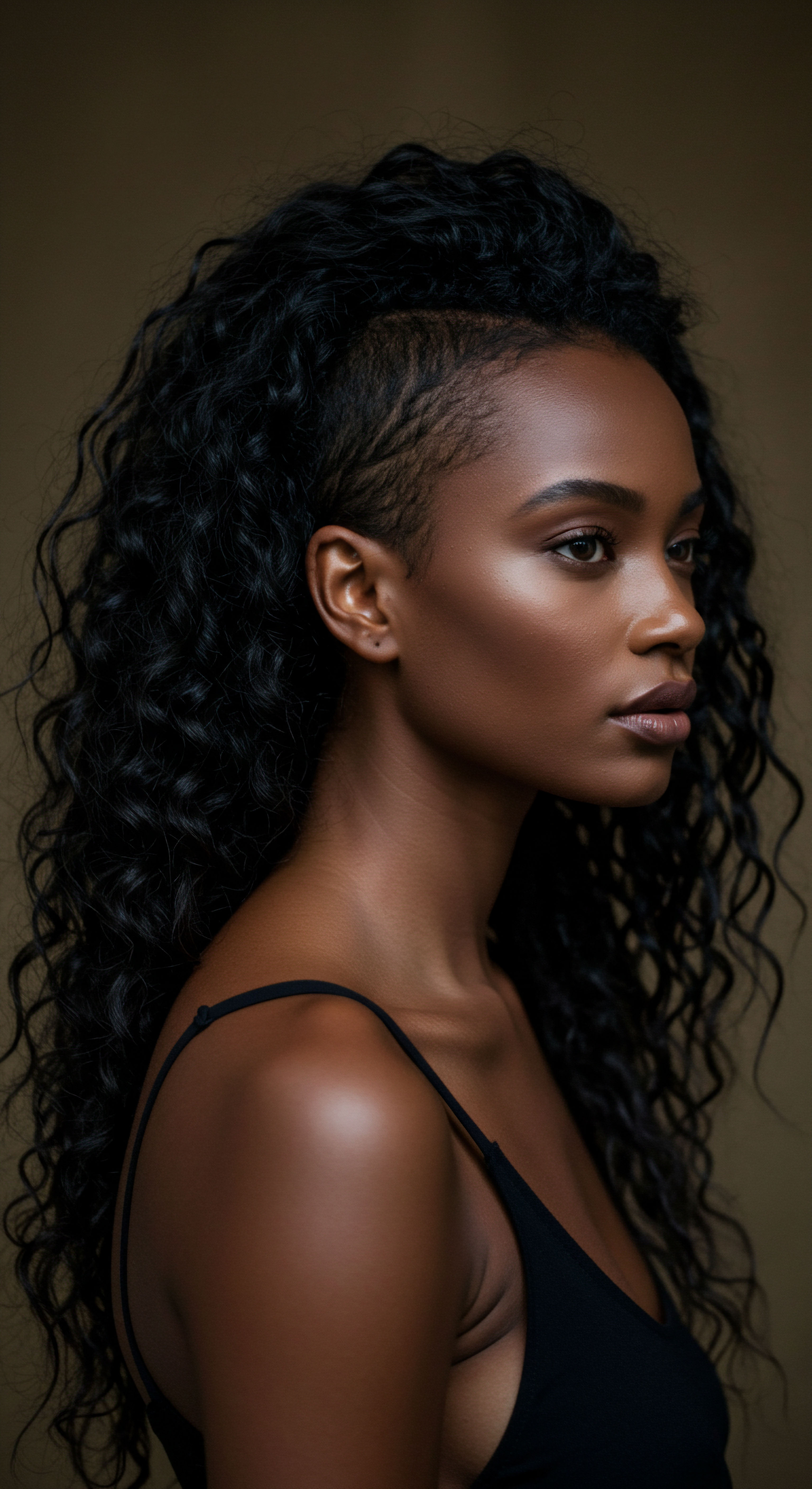
The Nighttime Sanctuary
The practice of protecting hair during sleep is an ancestral wisdom that modern hair care has widely adopted, albeit sometimes without full acknowledgment of its origins. From silk headwraps in ancient Egypt to cotton bonnets in various African diasporic communities, covering hair at night served a dual purpose ❉ preserving intricate styles and protecting delicate strands from friction and moisture loss. This seemingly simple act prevents tangling, breakage, and the absorption of natural oils by bedding materials.
The choice of material for sleep protection was often deliberate. Smooth fabrics like silk or satin minimize friction, allowing hair to glide rather than snag. Cotton, while absorbent, was sometimes used for its breathability or accessibility, often layered with other materials.
The wisdom here extends beyond mere physical protection; it speaks to a deeper recognition of continuous care, recognizing that hair health is a 24-hour commitment. This nighttime ritual transforms sleep into an opportunity for hair preservation, a quiet act of foresight that sustains vitality.

Do Traditional Ingredients Hold Scientific Promise?
The efficacy of many traditional hair care ingredients, long validated by generations of anecdotal evidence, is now increasingly being explored by scientific research. Consider the widespread use of rice water in Asian traditions for hair strength and growth. While once viewed as a simple home remedy, studies have begun to examine its potential benefits, particularly the presence of inositol, a carbohydrate that can remain in the hair after rinsing and offer protection. Similarly, the use of various plant extracts in African and Indian hair care, such as Chebe powder or Amla, is drawing scientific attention for their purported strengthening and conditioning properties.
For instance, a study by Robbins, et al. (2012) in the Journal of Cosmetic Science, which conducted Microscopic Analysis of Human Hair Damage Caused by Chemical and Thermal Treatments, highlighted the significant cuticle and cortex damage resulting from such interventions. This research, while focusing on damage, implicitly underscores the value of traditional practices that often eschew harsh chemicals and excessive heat, thereby preserving the hair’s structural integrity.
The consistent, gentle application of natural ingredients, often rich in fatty acids, antioxidants, and vitamins, works to maintain the hair’s natural tensile strength and elasticity, mitigating the kind of damage observed in modern chemical processing. This suggests that traditional methods, by prioritizing the hair’s inherent state, often align with what modern science confirms is beneficial for long-term strand health, rather than short-term aesthetic alteration.
Here is a comparison of methods:
| Aspect Focus |
| Traditional Methods Preservation of natural structure, long-term health. |
| Modern Chemical/Thermal Methods Temporary alteration, styling, often at cost of integrity. |
| Aspect Ingredients |
| Traditional Methods Natural botanicals, oils, butters, clays. |
| Modern Chemical/Thermal Methods Synthetic chemicals, high-heat protectants, silicones. |
| Aspect Methodology |
| Traditional Methods Gentle manipulation, infrequent processing, holistic care. |
| Modern Chemical/Thermal Methods Frequent application, high heat, chemical bonds broken/reformed. |
| Aspect Traditional practices often prioritize gentle preservation, contrasting with methods that risk structural compromise. |

Holistic Well-Being and Hair Vitality
Beyond topical applications, many cultural traditions recognize hair health as an extension of overall well-being. This holistic perspective views the body, mind, and spirit as interconnected, where imbalances in one area can manifest in another, including the hair. Dietary practices, stress management techniques, and even spiritual rituals were often integrated into hair care. For example, Ayurvedic traditions from India emphasize specific diets and herbal remedies for hair growth, believing that internal balance directly affects external vitality.
This interconnectedness encourages us to look beyond superficial symptoms and consider the root causes of hair concerns. Are we adequately nourished? Is our stress managed? Are we hydrated?
These questions, central to ancestral methods, prompt a more comprehensive strategy for hair care that goes beyond simply applying products. It encourages a mindful relationship with our bodies, recognizing that true hair radiance emanates from within, nurtured by conscious choices that support our entire being. This broader recognition transforms hair care from a mere routine into a practice of self-reverence.
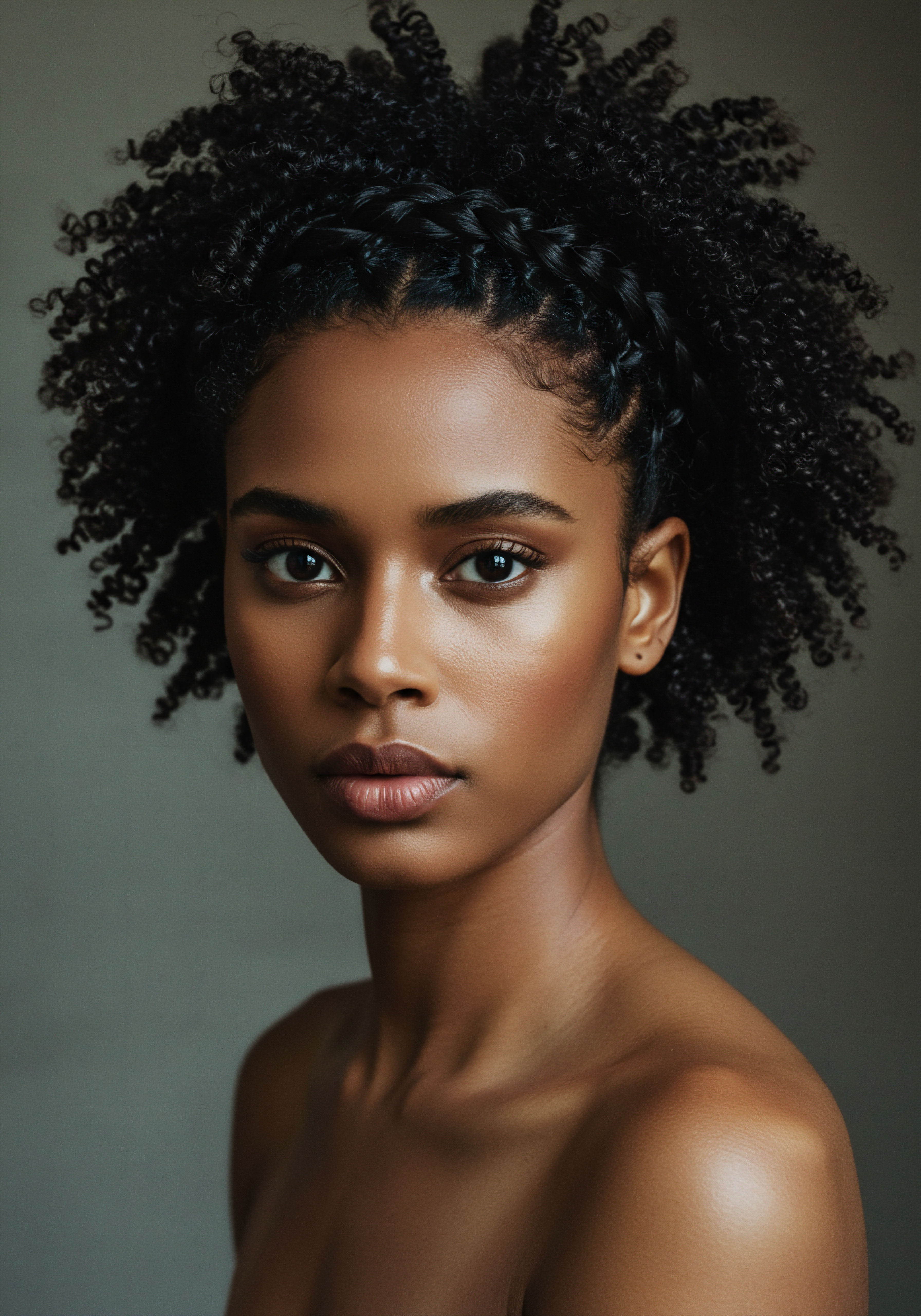
Reflection
As we draw our thoughts together, the profound wisdom held within cultural hair traditions becomes undeniably clear. It is a quiet call to reconsider our relationship with our spirals, moving beyond fleeting trends and toward a more intuitive, respectful connection. The journey through ancestral practices, scientific insights, and personal well-being reveals a timeless truth ❉ that the most authentic care for our textured strands is deeply rooted in recognition, patience, and a reverence for their unique heritage. Our hair, then, becomes not just a part of our appearance, but a living connection to a legacy of strength, beauty, and resilience, inviting us to carry forward these gentle traditions with mindful hands and open hearts.
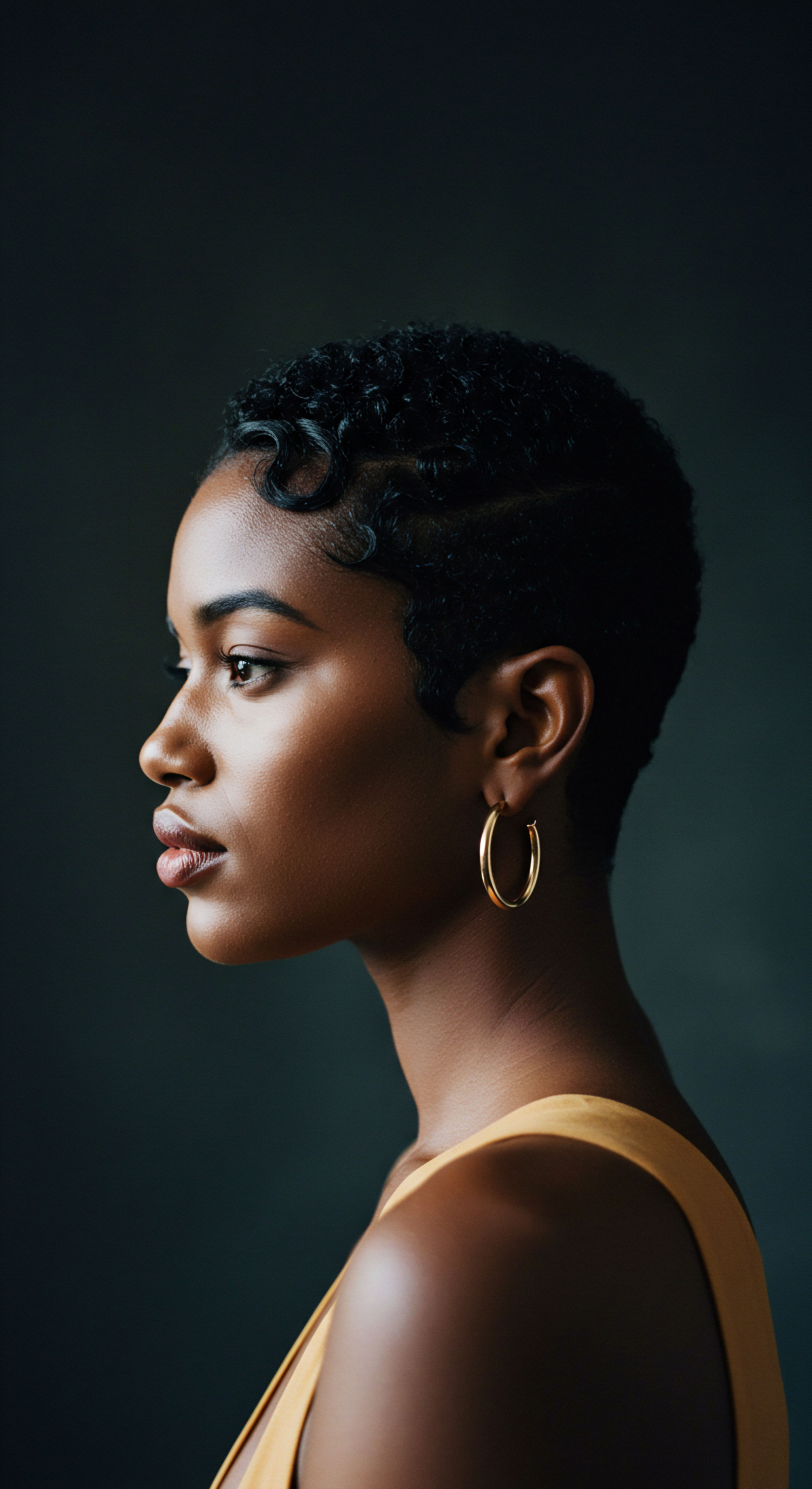
References
- Robbins, J. L. et al. “Microscopic analysis of human hair damage caused by chemical and thermal treatments.” Journal of Cosmetic Science, vol. 63, no. 1, 2012, pp. 27-36.
- Taylor, S. K. et al. “The psychological impact of hair on African American women ❉ a review.” Journal of Black Psychology, vol. 38, no. 2, 2012, pp. 131-149.
- Adewunmi, S. B. et al. “The use of traditional plant extracts in hair care in Africa ❉ A review.” Journal of Medicinal Plants Research, vol. 11, no. 16, 2017, pp. 278-289.
- Khumalo, M. J. “Hair breakage in African women ❉ a review of risk factors and preventative strategies.” International Journal of Dermatology, vol. 44, no. S1, 2005, pp. 2-6.
- D’Souza, L. “Ayurvedic hair care ❉ A review.” International Journal of Pharmaceutical Sciences Review and Research, vol. 27, no. 2, 2014, pp. 15-20.